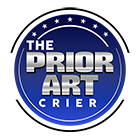S. 4704, the Patent Quality and Improvement Act of 2022 requires the GAO to define a clear and thorough search. As an expert searcher this is not hard. I approach this question from the experience of a searcher in the engineering arts. Chemical searches and bio-tech follow different procedures.
First of all, a clear and thorough search already has a name. In practice, the term only applies to the private sector because it is only in the private sector that someone, usually an attorney, pays for a thorough patentability search. A thorough patentability search is a well known product in the search/patent prosecution business. However, the concept of a clear and through search reminds me of a well know Supreme Court phrase – I know it when I see it. Never-the-less, a clear and thorough search is a common everyday patentability search as produced in the private sector.
In the phrase “clear and through,” clear, I think, refers to reporting and I absolutely support showing transparency in your work. The PTO provides a print-out of examiner queries however you can-not determine what documents the examiner actually reviewed. Private sector search reports are typically very explicit on this point since people are paying for the product.
The question for the GAO and actually all patent stakeholders then is: What constitutes a thorough patentability search?
A thorough patentability search conveys knowledge of average skill in the art. The end product is a body of evidence on which claims for the subject invention can be discerned. The objective is to find everything without being cumulative.
Conducting a patentability search is a process. MPEP § 904.02 General Search Guidelines provides a pretty good generalized description of the process and source material. The manual states that there are three reference sources (US, Foreign, NPL), emphasizes classification, and cautions against relying on text only. The shortcoming as far as patentability is the emphasis on searching claims. A thorough patentability search does not look for evidence directed to the claims. (Searching claims is a validity question and beyond the scope of defining a thorough patentability search. In fact, focusing on claims at this stage muddles the very idea of patentability.) The MPEP is inadequate in describing a patentability search because it is not sufficiently explicit.
There are only four steps to a thorough patentability search:
- A patentability search is premised on the expectation that a searcher will look at all patent documents in one or more sub-group classifications. Therefore, manually search the 1-3 sub-groups with definitions that read on the subject of the invention;
- Keywords applied to subject matter sub-groups beyond the areas designated to be manually searched;
- Keywords without classification limitations;
- Forward and reverse citation review.
There are additional techniques that a skilled professional searcher will employ. They may use keywords in the title and abstract, or try combining sub-groups to identify a document classified in two areas. I do not mention NPLs in the four step process because NPLs are not relevant in many searches. I also don’t mention artificial intelligence here because at this point AI is still rudimentary in this space but it is emerging as a fourth implement in the searchers toolbox.
I’ve identified an objective and a four step process but that is not a definition.
A patentability search will identify evidence of prior teachings related to the invention. There is an immense amount of misinformation and speculation about patent citations. In terms of average skill in the art, there is usually only a limited amount of evidence for any single application. A patentability search will produce a dozen references – give or take. Beyond 20 you are literally moving further away from the invention and adding noise to the record.
The #1 reason the patent office issues low quality patents is time. Patentability searches vary in time, of course, but the vast majority, perhaps 80%, will fall into an 8-12 hour range.
Answering the question of what constitutes a thorough patentability search, I will answer this:
A thorough patentability search is an investigation to
identify evidence in printed documents that establishes
average skill in the art conveying a reduced probability
that additional evidence will be found to invalidate claims
on a patent allowed over the evidence identified in the search.
Defining a thorough patentability search, as we can see here, is the easy part. The fact remains that 400k applications a year cannot receive this amount of attention.
